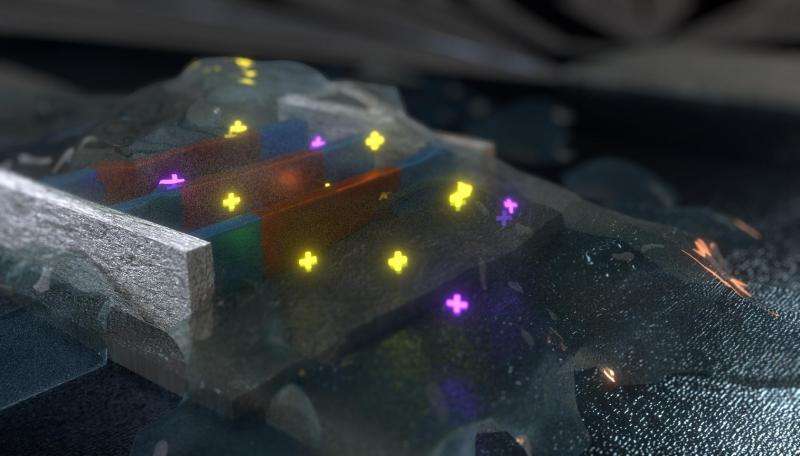Separation methods from dielectric forcing with alternating current and oxidation caused by electric current for (enrichment) of advanced metal nanotubes (PhD in nano-microelectronics)
Researcher and author: Dr. ( Afshin Rashid)
Note: Geometric structure (SWCNT) in the preparation of a carbon nanotube by twisting part of the graphene plate. (Square_rectangle represents a single non-tubular cell) which is denoted by the vector Ch.
SWCNTs nanotubes with the same properties can be obtained in two ways:
1_ Controlled synthesis. 2_ Chemical separation
After the type of synthesis that has been done in the two methods. Although efforts have been made to control the properties and quality of CNTs in the CVD process, none of these methods can produce a large number of identical SWCNTS and no single species can be created. At present, it seems that post-synthesis separation methods can be better commercialized than control methods during synthesis. Of course, it would be cheaper if isolation methods resulted in a large amount of single species production during synthesis. Isolation methods have used alternating current dielectrophoresis and electric current oxidation to enrich advanced or semiconductor metal nanotubes. In the separation of SWCNTs based on structural differences and their guidance is done through different chemical methods, different methods for creating different species of SWCNTs are discussed and separation methods after and during synthesis are in the same group, but the focus is on chemical separation methods. The structure between CNTs and CNTs can be thought of as graphite plates with a layered hexagonal lattice that are tubularly cylindrical. Nanotubes are characterized by the number of layers that their cylindrical walls form; Single-walled carbon nanotubes (SWCNTs) and multi-walled carbon nanotubes (MWCNTs) and SWCNT are obtained from a graphene plate of a specified size. Due to the cylindrical symmetry, based on the cylindrical shape (we can only pipe it in one direction so that 2 atoms are in line. The structural differences between CNTs and CNTs can be thought of as graphite plates with a layered hexagonal lattice that are tubularly cylindrical. Nanotubes are characterized by the number of layers that their cylindrical walls form; Single-walled carbon nanotubes (SWCNTs) and multi-walled carbon nanotubes (MWCNTs) and SWCNT are obtained from a graphene plate of a specified size. Due to the cylindrical symmetry, based on the cylindrical shape (we can only pipe it in one direction so that 2 atoms are in line. The structural differences between CNTs and CNTs can be thought of as graphite plates with a layered hexagonal lattice that are tubularly cylindrical. Nanotubes are characterized by the number of layers that their cylindrical walls form; Single-walled carbon nanotubes (SWCNTs) and multi-walled carbon nanotubes (MWCNTs) and SWCNT are obtained from a graphene plate of a specified size. Due to the cylindrical symmetry, based on the cylindrical shape (we can only pipe it in one direction so that 2 atoms are in line.
Two parameters are used to describe the structure of SWCNT. One is Ch, which is oriented from the main atom of the chiral vector to the next atom, also called the tube vector, and its length is equivalent to the circumference of the nanotube circle. Chiral SWCNTs are optically active and can have two non-equivalent spiral orientations. The piping process can be done both from above and below the graphene plate. The two tubes will be mirror images of each other, in which case the graphene plate is the mirror plate. These two states produce left-handed (M) and right-handed (P) isomers. In the case of chiral nanotubes, these plates are called reflection plates, and the two nanotubes are equivalent.
It can be concluded that when (3 / mn) is an integer, SWCNT is a metal type and in other cases a semiconductor. This is entirely geometrical, with one-third of metal SWCNTs and two-thirds semiconductors. Single-walled nanotubes are exceptional compounds because they can be metallic or semiconductor, with no difference between them and the chemical bond between the carbon atoms inside the tubes, and no impurities or the presence of added foreign matter.
Researcher and author: Dr. ( Afshin Rashid)
PhD in Nano-Microelectronics




